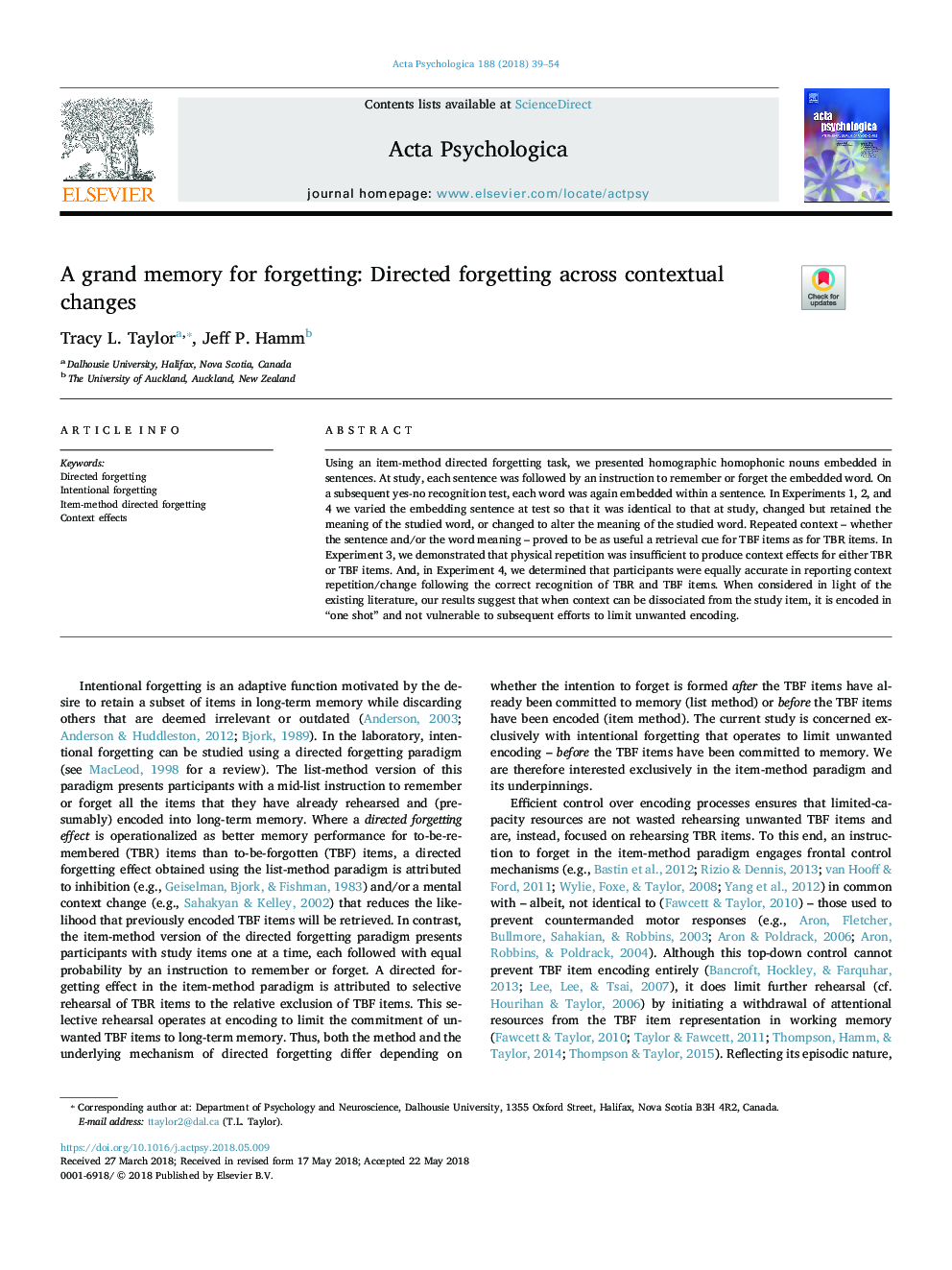| Article ID | Journal | Published Year | Pages | File Type |
|---|---|---|---|---|
| 7276566 | Acta Psychologica | 2018 | 16 Pages |
Abstract
Using an item-method directed forgetting task, we presented homographic homophonic nouns embedded in sentences. At study, each sentence was followed by an instruction to remember or forget the embedded word. On a subsequent yes-no recognition test, each word was again embedded within a sentence. In Experiments 1, 2, and 4 we varied the embedding sentence at test so that it was identical to that at study, changed but retained the meaning of the studied word, or changed to alter the meaning of the studied word. Repeated context - whether the sentence and/or the word meaning - proved to be as useful a retrieval cue for TBF items as for TBR items. In Experiment 3, we demonstrated that physical repetition was insufficient to produce context effects for either TBR or TBF items. And, in Experiment 4, we determined that participants were equally accurate in reporting context repetition/change following the correct recognition of TBR and TBF items. When considered in light of the existing literature, our results suggest that when context can be dissociated from the study item, it is encoded in “one shot” and not vulnerable to subsequent efforts to limit unwanted encoding.
Related Topics
Life Sciences
Neuroscience
Cognitive Neuroscience
Authors
Tracy L. Taylor, Jeff P. Hamm,
